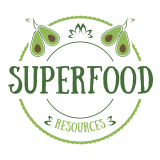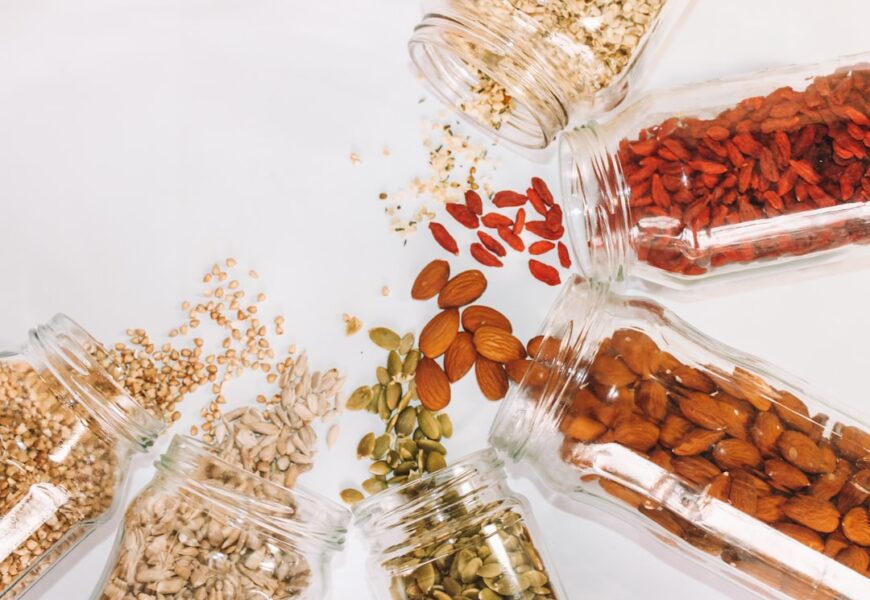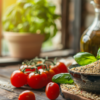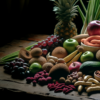Best Ways to Cook Superfoods to Retain Their Nutritional Value
Introduction
Welcome to the colorful world of superfoods! If you’re eager to boost your wellness routine, incorporating superfoods into your diet is a smart and tasty choice. However, did you know that the method you choose to cook these nutrient powerhouses can significantly impact their health benefits? In this post, we’ll dive into various cooking techniques that help retain the maximum nutritional value in superfoods. Whether you’re a seasoned chef or a kitchen newbie, mastering these methods will elevate your healthy eating game, ensuring that you get the most out of every bite. Get ready to cook smart and eat smart!
Understanding Superfoods
 Image courtesy: Pexels
Image courtesy: Pexels
Definition of Superfoods
Superfoods are foods that are exceptionally rich in vitamins, minerals, antioxidants, and other nutrients that can positively affect one’s health. They are called “super” because they contain higher levels of nutrients compared to other foods in terms of volume and calories. Common examples include blueberries, kale, salmon, and quinoa. These ingredients are not only nutritious but are also known for their capabilities to improve stamina, health, and overall well-being.
Importance of Superfoods in a Healthy Diet
Incorporating superfoods into the diet is crucial because of their high nutrient density, which supports optimal body function and enhances immune health. They provide a host of beneficial antioxidants that combat free radicals, potentially reducing the risk of chronic diseases such as heart disease, arthritis, and type 2 diabetes. Additionally, superfoods can help in managing weight, improving gastrointestinal health, and maintaining overall vitality. Eating a variety of superfoods can enrich your diet and ensure you gain different key nutrients that promote health and longevity.
Factors Affecting Nutritional Value of Superfoods
Cooking Temperature
One of the pivotal factors that influence the nutritional content of superfoods is the cooking temperature. High temperatures can lead to the breakdown of delicate vitamins and minerals. For instance, the vitamin C found in citrus fruits and leafy greens can be significantly reduced when these foods are cooked at high temperatures. To retain the maximum nutritional value, it’s often recommended to cook foods at lower temperatures. Gentle cooking methods like steaming or blanching are ideal for preserving the integrity of most nutrients while still making foods safe and palatable.
Cooking Time
Similarly, the duration of cooking time can markedly affect the nutrient levels in superfoods. Overcooking can not only make your food less appealing but can also lead to a substantial loss of nutrients. For example, boiling broccoli for too long can sap it of sulforaphane, the compound known for its anti-cancer properties. To circumvent this problem, cook superfoods for the least amount of time necessary. Quick-cooking methods like sautéing, and even microwaving, can be effective while still maintaining the health-boosting attributes of the food.
Exposure to Light and Air
Lastly, exposure to light and air can drastically reduce the potency of nutrients in superfoods. When foods that are sensitive to oxidation, like olive oil and nuts, are left exposed to air and light, they can become rancid, losing not just flavor but also nutritional value. To preserve these nutrients, store susceptible superfoods in dark, airtight containers. This holds particularly true for vitamins A, D, E, and K, as well as omega-3 fatty acids, all of which are susceptible to deterioration upon exposure to environmental factors. Therefore, proper storage and prompt usage after exposure to air are crucial to maximizing the benefits received from superfoods.
Understanding these factors can help you handle superfoods in a way that maximizes their nutritional benefits. By adjusting how you cook and store these powerful foods, you’ll be better equipped to use them to their full potential in your daily diet.
Best Cooking Methods for Retaining Nutrients in Superfoods
Steaming
Steaming is a gentle, fat-free cooking method that preserves the natural goodness in superfoods without the need for oils or fats, which can degrade their nutritional profile. It involves cooking food using the vapor from boiling water, which helps maintain the integrity of water-soluble vitamins such as Vitamin C and B vitamins. Plus, it’s supremely easy! Vegetables like broccoli, spinach, and kale benefit immensely from steaming, as it retains their color, texture, and most importantly, antioxidants and vitamins that might be lost through other cooking methods.
Raw consumption
Eating superfoods raw is one of the most effective ways to ensure you’re getting the maximum nutrients available. Many superfoods, like berries, nuts, seeds, and leafy greens, are best consumed fresh. The raw form preserves enzymes, vitamins, and minerals that can be sensitive to heat and thus diminished or destroyed during the cooking process. Incorporating raw fruits and vegetables into your diet through salads, smoothies, or as snacks is not only nutritious but also incredibly refreshing.
Fermentation
Fermentation may not come to mind immediately when thinking of cooking methods, but it’s a fantastic way to boost the nutritional value of certain superfoods. Through fermentation, bacteria naturally convert sugars and starches in foods into lactic acid, which preserves the food and promotes beneficial enzymes, b-vitamins, omega-3 fatty acids, and various strains of probiotics. Foods like kimchi, sauerkraut, and kefir are fermented and can significantly enhance gut health and improve the bioavailability of nutrients.
Stir-frying at low heat
Stir-frying superfoods at a low heat is a quick and healthy way to cook. This method allows for the vegetables to be cooked just enough to be digestible while still retaining most of their vitamins and minerals. The key is to use a minimal amount of healthy oil, such as olive or avocado oil, and to keep the cooking time short. This technique is especially great for superfoods like garlic, onions, and leafy greens, as it brings out their flavors while maintaining their nutritional profile.
Tips for Maximizing Nutritional Value When Cooking Superfoods
Use fresh ingredients
To ensure that you’re getting the most out of your superfoods, always opt for the freshest ingredients you can find. Fresh fruits, vegetables, and other items like lean meats and fish are packed with nutrients that can be significantly reduced in older, less fresh produce. Additionally, the fresher the ingredient, the better the flavor.
Minimize cooking time
Overcooking can destroy essential nutrients in any dish, especially when it comes to delicate superfoods. To preserve these nutrients, cook foods for the minimum amount of time necessary. This is particularly vital for water-soluble vitamins like Vitamin C and all B vitamins, which are highly sensitive to heat.
Store superfoods properly
Proper storage of superfoods can also influence their nutritional quality. Light, air, and heat are some factors that can degrade nutrients quickly. Store perishable superfoods in airtight containers and keep them in the refrigerator or in a cool, dark place when appropriate. Grains and nuts, for example, can go rancid if exposed to too much heat, while leafy greens need to be kept cool and dry to maintain their freshness.
Combine superfoods for enhanced benefits
Synergizing superfoods can amplify their health benefits. For instance, combining fat-soluble vitamin sources, like vitamin A from carrots, with fats like those in avocados can improve nutrient absorption. Furthermore, creating meals that combine various types of superfoods can provide a more balanced intake of vitamins, minerals, and antioxidants, making each meal not only delicious but also maximally nutritious.
Recipes Demonstrating Nutrient-Preserving Techniques
 Image courtesy: Pexels
Image courtesy: Pexels
Superfood Salad with Lemon-Olive Oil Dressing
Whipping up a superfood salad is a fantastic way to enjoy the raw nutritional benefits of various superfoods. This recipe features a mix of leafy greens like spinach and kale, which are packed with vitamins, alongside colorful berries such as blueberries and strawberries that offer a rich supply of antioxidants. To enhance the nutrient absorption, add nuts like almonds for a healthy dose of fats. The simple lemon-olive oil dressing provides vitamin C and healthy fats, optimizing the nutrient intake without overcooking any ingredient. Just whisk together fresh lemon juice, extra virgin olive oil, a pinch of salt, and a touch of honey for a natural sweetness. Toss all ingredients gently to retain the delicate structure and nutrients of the greens and fruits.
Raw Superfood Energy Balls
For a quick snack that packs a nutritional punch, try making raw superfood energy balls. These require no cooking at all, which ensures that all the nutritional properties of the ingredients are fully preserved. Start by pulsing dates in a food processor until they form a sticky base. Add a mix of superfoods like chia seeds, flaxseeds, and hemp seeds for omega-3 fatty acids and fiber. Rolled oats can be included for texture, and a spoonful of raw cocoa powder for a touch of antioxidants. Roll the mixture into small balls and coat with shredded coconut or cocoa powder. These energy balls are not only delicious but are a great way to get a concentrated dose of superfoods in a bite-sized treat.
Fer:mented Kimchi with Superfood Vegetables
Fermentation is another excellent method to preserve and even enhance the nutritional value of superfoods. Making your own kimchi with superfood vegetables like kale, carrots, and beets can add valuable probiotics to your diet, which aid in digestion and boost the immune system. Begin by salting chopped vegetables and let them sit to draw out moisture. Rinse and drain, then add a paste made from garlic, ginger, and chili peppers for flavor and additional benefits. Allow the mixture to ferment at room temperature for a few days before storing it in the refrigerator. As the kimchi ferments, the lactic acid bacteria not only preserve the veggies but also produce beneficial enzymes and vitamins, enriching your meal with flavors and nutrients.
Conclusion
Incorporating superfoods into your diet doesn’t just add variety; it can significantly enhance your health. By using the right cooking methods, we ensure that the nutrients these powerhouse foods offer are not lost in the process. Steaming, quick stir-frying, and using minimal water during boiling are great ways to maintain those essential vitamins and minerals. Remember, knowledge about how to properly cook superfoods is just as important as choosing to eat them. Happy healthy cooking!










